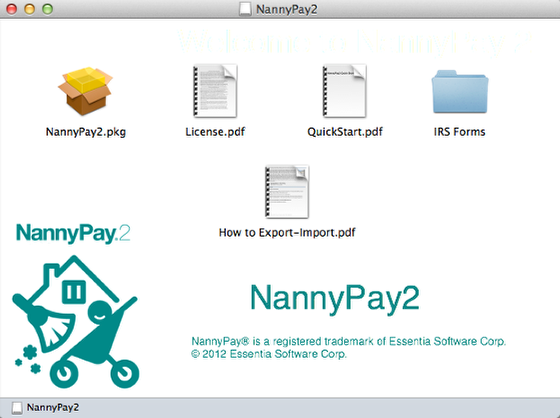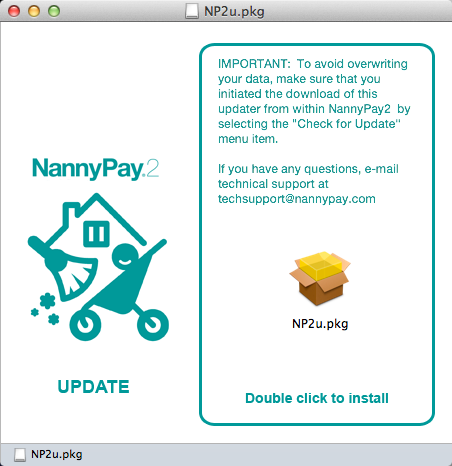Macintosh Instructions - Installing and Upgrading
System Requirements
NannyPay2 requires an Intel based Macintosh computer running OS X 10.6 or later with at least 1 GB of memory. Users must also have Quicktime and Java runtime applications installed on their systems. NannyPay2 is a Filemaker Pro runtime application and takes advantage of all the strengths of a relational database back end.
New Users - Downloading and Installing NannyPay2 for the First Time

Visit www.nannypay.com and download the NannyPay2.dmg file to your desktop. Then double-click the file you just downloaded. The disk image will automatically mount and open as illustrated above. Next, double-click the "NannyPay2.pkg" file and follow the instructions on the installer. NannyPay2 will automatically install in your system's "Applications" directory. To launch NannyPay2, open your Applications directory and double click the NannyPay2 icon.
Current Users - Upgrading NannyPay2

NannyPay2 is a database application. Updating or upgrading the software consists of (1) creating a backup, (2) exporting the current data, (3) replacing the database application, and (4) importing the data back into the upgraded software. This four-step process automatically occurs when the user chooses to update NannyPay2 by clicking "Check for Update" under the "NannyPay2" menu in the Macintosh version of NannyPay2. Current users of NannyPay2 should never update their software using the full installation package described in the first step, above. Doing so, risks complete data loss.
When a current user updates NannyPay2 as required from within the software application, NannyPay2 will initiate the download of the "NP2u.dmg" file and exit. Once downloaded, double-click the "dmg" file to automatically mount and open the upgrade package. Then double-click the "NP2u.pkg" file and follow the installation directions. Once installed, launch NannyPay2, which will automatically complete the four-step upgrade process.